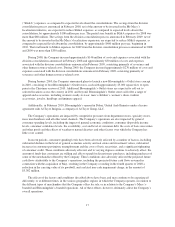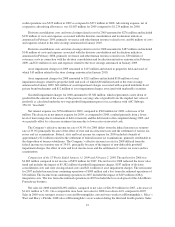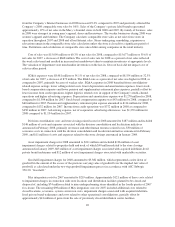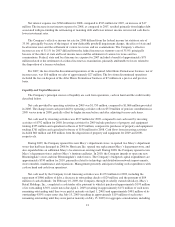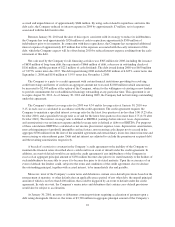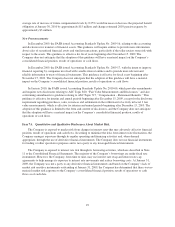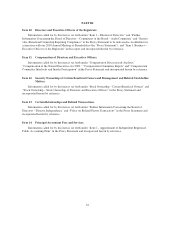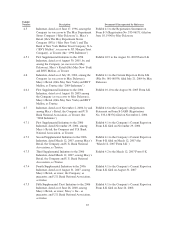Macy's 2009 Annual Report Download - page 33
Download and view the complete annual report
Please find page 33 of the 2009 Macy's annual report below. You can navigate through the pages in the report by either clicking on the pages listed below, or by using the keyword search tool below to find specific information within the annual report.The use of different assumptions, estimates or judgments in either step of the goodwill impairment testing
process, including with respect to the estimated future cash flows of the Company’s reporting units, the discount
rate used to discount such estimated cash flows to their net present value, the reasonableness of the resultant
implied control premium relative to the Company’s market capitalization, and the appraised fair value of the
reporting units’ tangible and intangible assets and liabilities, could materially increase or decrease the fair value
of the reporting unit and/or its net assets and, accordingly, could materially increase or decrease any related
impairment charge.
Income Taxes
Income taxes are estimated based on the tax statutes, regulations and case law of the various jurisdictions in
which the Company operates. Deferred income tax assets and liabilities are recognized for the future tax
consequences attributable to differences between the financial statement carrying amounts of existing assets and
liabilities and their respective tax bases, and net operating loss and tax credit carryforwards. Deferred income tax
assets and liabilities are measured using enacted tax rates expected to apply to taxable income in the years in which
those temporary differences are expected to be recovered or settled. Deferred income tax assets are evaluated for
recoverability based on all available evidence, including past operating results, estimates of future taxable income,
and the feasibility of tax planning strategies. Deferred income tax assets are reduced by a valuation allowance when
it is more likely than not that some portion of the deferred income tax assets will not be realized.
Uncertain tax positions are recognized if the weight of available evidence indicates that it is more likely
than not that the tax position will be sustained on examination, including resolution of any related appeals or
litigation processes, based on the technical merits of the position. Uncertain tax positions meeting the more-
likely-than-not recognition threshold are then measured to determine the amount of benefit eligible for
recognition in the financial statements. Each uncertain tax position is measured at the largest amount of benefit
that is more likely than not to be realized upon ultimate settlement. Uncertain tax positions are evaluated and
adjusted as appropriate, while taking into account the progress of audits of various taxing jurisdictions. The
Company does not anticipate that resolution of these matters will have a material impact on the Company’s
consolidated financial position, results of operations or cash flows.
Significant judgment is required in evaluating the Company’s uncertain tax positions, provision for income
taxes, and any valuation allowance recorded against deferred tax assets. Although the Company believes that its
judgments are reasonable, no assurance can be given that the final tax outcome of these matters will not be
different from that which is reflected in the Company’s historical income provisions and accruals.
Self-Insurance Reserves
The Company, through its insurance subsidiaries, is self-insured for workers’ compensation and public
liability claims up to certain maximum liability amounts. Although the amounts accrued are actuarially
determined by third parties based on analysis of historical trends of losses, settlements, litigation costs and other
factors, the amounts the Company will ultimately disburse could differ from such accrued amounts.
Pension and Supplementary Retirement Plans
The Company has a funded defined benefit pension plan (the “Pension Plan”) and an unfunded defined
benefit supplementary retirement plan (the “SERP”). The Company accounts for these plans in accordance with
ASC Topic 715, “Compensation – Retirement Benefits.” Under ASC Topic 715, an employer recognizes the
funded status of a defined benefit postretirement plan as an asset or liability on the balance sheet and recognizes
changes in that funded status in the year in which the changes occur through comprehensive income.
Additionally, pension expense is recognized on an accrual basis over employees’ approximate service periods.
The pension expense calculation is generally independent of funding decisions or requirements. The Company
anticipates that Pension and SERP expense, which was approximately $110 million in 2009, will increase by
approximately $30 million in 2010.
27


